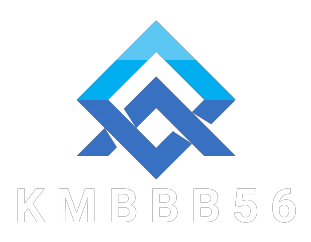In the digital age, images play a significant role in how we communicate, share information, and even create art. Whether you’re a photographer, graphic designer, or simply someone who loves capturing memories, the format of your images matters. One of the most common image formats is JPEG (Joint Photographic Experts Group) jpeg converter, but sometimes, we need to convert our images to other formats for different purposes. This is where a JPEG converter comes into play.
- What Is a JPEG Converter?
- Why Would You Need a JPEG Converter?
- How Does a JPEG Converter Work?
- Types of JPEG Converters
- How to Convert JPEG Images Using a Converter
- Benefits of Using a JPEG Converter
- Conclusion
What Is a JPEG Converter?
A JPEG converter is a tool or software that allows you to change an image file from one format to another, specifically to or from the JPEG format. JPEG is known for its high compression rates, making it ideal for web use and photo storage. However, certain tasks, such as editing, printing, or sharing images, may require different file formats like PNG, GIF, or TIFF. This is where the need for a converter comes in.
Why Would You Need a JPEG Converter?
There are several reasons why you might need to convert a JPEG file to another format:
- Higher Image Quality: JPEG files are compressed, meaning some image data is lost. If you want to preserve the highest possible quality, you may choose a format like PNG, which uses lossless compression.
- File Size Considerations: Sometimes, you may need to reduce the file size of a JPEG image for faster loading on websites, social media, or email. Converting to a more compressed format can help.
- Compatibility with Software: Some software or online platforms may require specific formats. For example, vector-based editing tools like Adobe Illustrator prefer SVG, EPS, or PNG for compatibility.
- Transparency Support: Unlike JPEG, PNG allows transparency, making it a preferred choice for logos, icons, and other graphics that require see-through backgrounds.
- Special Use Cases: Certain professional printing needs may require TIFF files, which retain higher quality and color depth compared to JPEG.
How Does a JPEG Converter Work?
A JPEG converter works by using algorithms to transform the image data from one format to another. Depending on the converter, this may involve compression, color profile adjustments, or other methods of optimization. The result is a file in the new format that can be opened, edited, and used with other software or platforms.
Types of JPEG Converters
- Online JPEG Converters: Many online tools allow you to quickly convert JPEG images without the need to download any software. Some of the most popular options include websites like:
- Zamzar
- Convertio
- CloudConvert These online converters are convenient and easy to use, but they often have file size limitations and may require an internet connection.
- Desktop JPEG Converters: If you prefer to have more control over your conversions, you might want to consider downloading desktop software. Programs like Adobe Photoshop, GIMP, and IrfanView provide more advanced features, including batch processing and finer control over image settings.
- Mobile JPEG Converters: For those who need to convert images on the go, there are mobile apps available for both Android and iOS. Apps like JPEG / PNG Image Converter or Image Converter offer simple ways to convert images directly from your phone.
How to Convert JPEG Images Using a Converter
Using a JPEG converter is straightforward. Here’s a simple step-by-step guide:
- Choose Your Converter: Depending on whether you’re using an online tool, desktop software, or mobile app, open the respective tool.
- Upload Your JPEG File: Most online converters will have an “Upload” button where you can select your file from your computer or device. For desktop apps, you may need to open the image within the software.
- Select the Desired Output Format: Choose the file format you want to convert to (PNG, TIFF, BMP, etc.). Some converters allow you to adjust additional settings like image resolution, quality, or compression level.
- Convert the Image: Click on the “Convert” button, and wait for the tool to process the conversion. For larger files, this may take a few moments.
- Download the Converted File: Once the conversion is complete, you can download the file in its new format.
Benefits of Using a JPEG Converter
- Convenience: JPEG converters make it easy to change formats without needing complex software or technical skills.
- Customization: Many converters allow you to customize image quality, size, and resolution, ensuring that your image meets the specific needs of your project.
- Faster Workflow: For professionals working with multiple image files, batch conversion tools save a considerable amount of time.
Conclusion
A JPEG converter is an invaluable tool for anyone who works with images. Whether you’re a casual user or a professional, having the ability to switch between formats as needed opens up a world of possibilities. With online, desktop, and mobile options available, converting images has never been easier. By understanding the basics of JPEG conversion, you can make informed decisions about your image formats and ensure your visuals always meet your needs.
